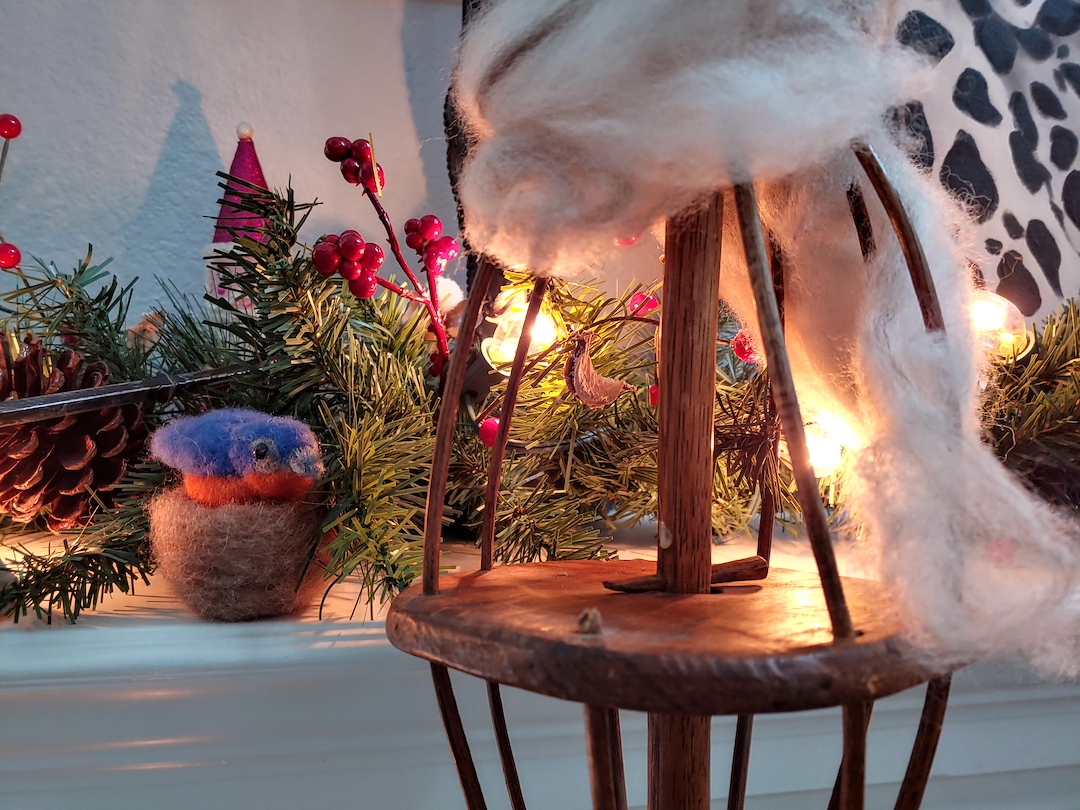In centuries past, Distaff day marks the day women resume their everyday household duties of which spinning for textiles was a major part of. People returned to normal duties following the day of Epiphany, a religious holiday where the Three kings arrived to meet the son of God, Jesus. Epiphany is the realization.

There are numerous websites, that for the most part, have all the same information about Distaff Day. I liked these two (note, I didn’t copy the actual link- copy paste in search should pull it up as if it were a link):
nationaltoday.com/distaff-day/ – states what it is, followed by some history, followed by a few sections of fun extras. Scroll down to Why We Love Distaff Day…I like that little section.
almanac.com/fact/distaff-day-the-day-after-epiphany-january-holiday – info about the day, plus a silly little, almost nursery rhyme, tale of historic tradition.
On this Distaff day, I have enjoyed hours of easy online research. Thinking of distaffs and spindles and spinning wheels, I couldn’t organize a solid mental timeline for the history of spinning. Oh certainly I’ve picked up information here and there, only to quickly not file it away. So off I went to create a brief overview of the history of spinning. Don’t worry, my notes fit on a 5 x 8 inch note page. It is a quick rundown of a few key things.
*No one actually has a date for when drop spindles started being used.
*Distaffs are long (or short) sticks used to hold wool for a spinner.
*Spindles date back to Neolithic time. Neolithic time was 7000 – 1700 BCE. Neolithic, which is also known as New Stone Age is the period of time people started to live in settlements, started farming and domesticating animals.
*Middle Ages, also know as the Dark Ages spans from 476 AD (the fall of Rome) – 1450 ish AD when the Age of Discovery began. Age of Discovery is 1400 – 1600 AD.
*No one actually has a date for the origin of the spinning wheel either. It is known to have happened between 500 – 1000 AD. Note, all textile making was done with spindles for 8,000 to 9,000 (probably more) years. That’s a lot of spindle spinning.
*The earliest drawing found of a spinning wheel dates 1035 AD.
*Spinning wheels were invented in the 11th century. First type was Charka style used for cotton. The spinning apparatus did make its way across countries over years and finally arrived to Europe approximately 1200 AD.
*NZ Spinning Wheels: “The first known pictures in Europe of spinning wheels are in several illuminated manuscripts from around 1335-1340.” and “The first picture showing a flyer and bobbin dates from the 1480s and comes from Southern Germany.”
*Very early 16th century spinning wheel starts to look more like our “modern” ones, they have bobbins and flyers!
*Thoughtco.com: “Around the year 1533, a spinning wheel featuring a stationary vertical rod and bobbin mechanism with the addition of a foot pedal debuted in the Saxony region of Germany.”
*1764 the spinning jenny was invented – key in textile industrialization.
From the 18th century forward, we have documented many many many different spinning wheel types. Pretty much all of them are based on the design from the 16th century with bobbins, flyers, and treadles. Many of those spinning wheels have a distaff to hold the wool or plant fibers while the spinner creates yarn and/or thread.
While I do not use a distaff regularly, I do spin almost daily. Spinning is alive! Although it’s not part of household duties anymore. It is a valuable part of the past and is still valued today. Maybe more so as we find ourselves inundated with fast fashion and over manufactured goods that really aren’t that healthy for us. I won’t get on a soapbox. Speaking only for myself, spinning and working with wool makes my heart sing and gives me purpose. The artist in me wants to design and create and make something functional and beautiful. So, it’s Distaff Day, time to get to work.
